Health
Healthy Foods Most People Refuse To Eat
Published
10 months agoon
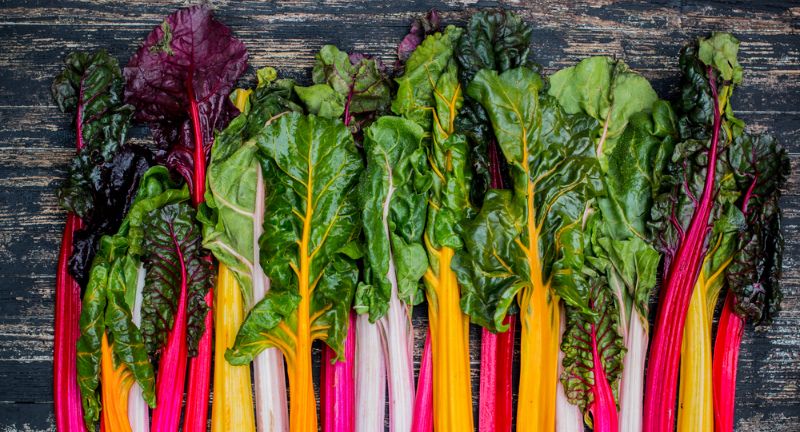
Shutterstock
Embarking on a journey to expand your culinary horizons can lead you to discover a plethora of unique and nutritious foods that, while offering significant health benefits, may initially challenge your palate. From the potent aroma of durian, known as the “king of fruits,” to the creamy tang of goat cheese, these foods often elicit strong reactions due to their distinctive flavors, textures, or appearances. Venturing beyond conventional tastes not only diversifies your diet but also introduces you to a world of essential nutrients, antioxidants, and probiotics. In this exploration, we delve into a variety of such foods, discussing their health benefits and offering tips on how to gradually incorporate them into your meals, making it easier to appreciate their unique qualities and enhance your overall dining experience.
Quinoa

Shutterstock
Quinoa is a gluten-free grain that has gained popularity for its high protein content and essential amino acids, but its nutty flavor and texture don’t appeal to everyone. It’s also rich in fiber, magnesium, B vitamins, iron, potassium, calcium, phosphorus, vitamin E, and various beneficial antioxidants. Quinoa can serve as a nutritious base for salads, a healthy side dish, or even a breakfast cereal alternative. Rinsing quinoa before cooking can help remove its natural coating, called saponin, which can make it taste bitter or soapy to some.
Chia Seeds
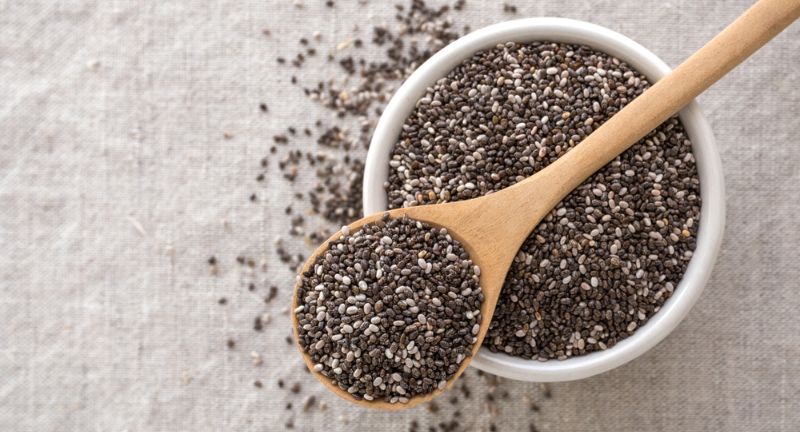
Shutterstock
Chia seeds are tiny but packed with omega-3 fatty acids, fiber, antioxidants, iron, and calcium, making them a valuable addition to any diet. Their gelatinous texture when soaked in liquid is not appreciated by everyone. These seeds can easily be added to smoothies, yogurt, oatmeal, or baked goods to boost nutritional content without a noticeable change in flavor or texture. Starting with a small amount is a good way to incorporate chia seeds into your diet gradually.
Tempeh

Shutterstock
Tempeh is a fermented soy product that’s a great source of protein, fiber, and vitamins, but its strong, nutty flavor and firm texture can be a barrier for some. It’s particularly popular among vegetarians and vegans as a meat substitute. Tempeh can be marinated and used in a variety of dishes, from stir-fries to sandwiches, making it a versatile ingredient in the kitchen. Experimenting with different seasonings and cooking methods can help make tempeh a flavorful and nutritious part of your meals.
Okra

Shutterstock
Okra, with its high fiber, vitamin C, and folate content, is beneficial for heart and digestive health, but its slimy texture can be off-putting for some. This vegetable can be cooked in ways that reduce its sliminess, such as roasting, grilling, or frying. Okra can be a delicious addition to soups, stews, and gumbo, where it acts as a thickener. Gradually incorporating okra into your diet can help you get used to its texture while benefiting from its nutritional properties.
Mushrooms

Shutterstock
Mushrooms are a rich source of B vitamins, selenium, potassium, and antioxidants, but their unique texture and earthy flavor aren’t loved by all. They play a crucial role in many vegetarian diets as a meat substitute due to their umami flavor. Cooking mushrooms properly can significantly enhance their taste and texture, making them a delicious component of many dishes. Whether sautéed, grilled, or added to soups and stews, mushrooms can be a versatile and nutritious addition to your meals.
Eggplant
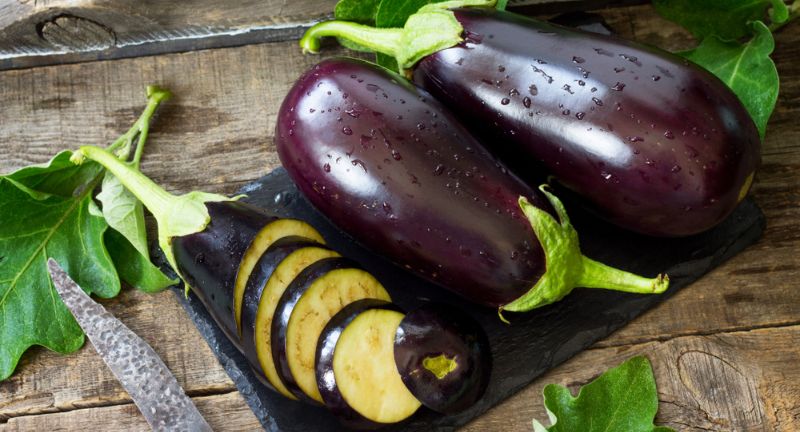
Shutterstock
Eggplant, known for its versatile use in dishes worldwide, is rich in fiber, vitamins B1 and B6, and antioxidants. Its texture and taste can be challenging for some to enjoy. When cooked properly, eggplant can be incredibly flavorful and absorbent of spices and sauces, making it a popular ingredient in a variety of cuisines. Roasting, grilling, or baking eggplant can enhance its flavor, making it a delightful addition to your culinary repertoire.
Artichokes

Shutterstock
Artichokes are a unique vegetable, high in fiber, vitamin C, and antioxidants, but their preparation and unfamiliar taste can deter many from trying them. They are known for their potential to improve digestive health and lower blood sugar levels. Cooking artichokes can be simple, and they can be enjoyed in a variety of ways, such as steamed, grilled, or used in dips and salads. Introducing artichokes into your diet can be a delicious way to enhance your intake of nutrients and fiber.
Cottage Cheese

Shutterstock
Cottage cheese is packed with protein and essential nutrients like calcium, but its lumpy texture and bland taste can be unappealing to some. It’s an excellent choice for those looking to build muscle mass or lose weight. Cottage cheese can be flavored with fruits, honey, or herbs to enhance its taste. Incorporating it into your diet as a snack or a meal component can offer nutritional benefits while allowing you to experiment with different flavor combinations.
Brussels Sprouts

Shutterstock
Brussels sprouts are high in vitamins C and K, fiber, and antioxidants, but their bitter taste can turn people away. Cooking methods play a significant role in their flavor, with roasting, grilling, or sautéing in garlic and olive oil greatly enhancing their taste. These methods help to caramelize the natural sugars in Brussels sprouts, making them much more palatable. Introducing them into meals alongside flavors you enjoy can make these nutritious vegetables a favorite.
Beets
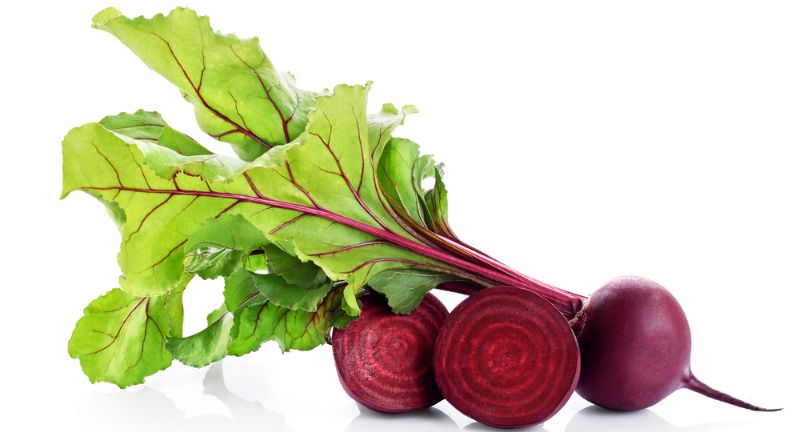
Shutterstock
Beets are nutrient-dense, offering high levels of fiber, folate (vitamin B9), manganese, potassium, iron, and vitamin C, but their earthy taste is not for everyone. They have been linked to numerous health benefits, including improved blood flow and lower blood pressure. Beets can be roasted, boiled, or eaten raw, and their natural sweetness makes them a versatile ingredient in salads, juices, and even desserts. Gradually adding beets to your diet can help you appreciate their unique flavor and nutritional benefits.
Liver

Shutterstock
Liver is one of the most nutrient-dense foods available, rich in vitamin A, B vitamins, iron, and protein, but its strong flavor and texture can be challenging for many. It plays a crucial role in a balanced diet, particularly for its high iron content which is beneficial for preventing anemia. Liver can be prepared in various ways to make it more palatable, such as mixing it into ground meats or making pâté. Gradually incorporating small amounts of liver into your diet can help you become accustomed to its taste while benefiting from its nutritional powerhouse.
Anchovies

Shutterstock
Anchovies are small, oily fish known for their strong flavor, making them a divisive ingredient in many cuisines. They are incredibly nutritious, rich in omega-3 fatty acids, protein, vitamins, and minerals. Anchovies can be used to add depth and umami to dishes, such as in Caesar salad dressing, pasta sauces, or on pizza. Starting with small amounts and combining them with other flavors can help mitigate their intensity while adding nutritional value to your meals.
Kale

Shutterstock
Kale is a superfood loaded with vitamins A, K, C, and minerals like calcium and potassium, but its bitter taste and tough texture can be unappealing to some. Its health benefits are undeniable, including aiding in digestion and having anti-inflammatory properties. Kale can be made more palatable by massaging it with a bit of olive oil and salt or incorporating it into smoothies and salads. Experimenting with kale in different dishes can help you take advantage of its nutritional benefits while finding ways to enjoy its taste.
Seaweed
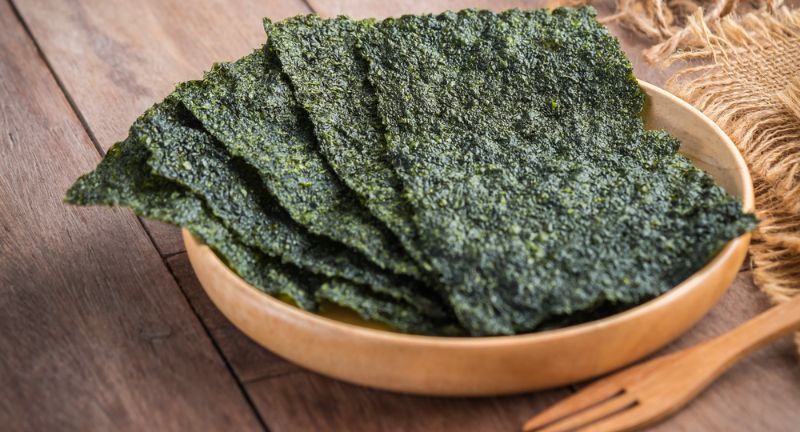
Shutterstock
Seaweed is a broad term for marine plants and algae that grow in the ocean, rivers, lakes, and other water bodies, offering a unique source of vitamins, minerals, and antioxidants, but its sea-like flavor and slimy texture can deter many. It’s a staple in Asian cuisine, known for its ability to provide iodine, which is essential for thyroid function. Seaweed can be enjoyed in various forms, such as dried snacks, in soups, or as sushi wraps. Introducing seaweed into your diet gradually can help you get accustomed to its taste while benefiting from its nutritional profile.
Tofu
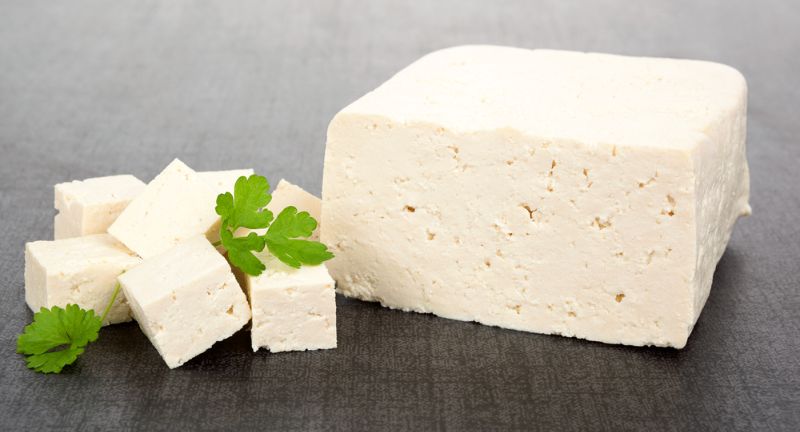
Shutterstock
Tofu, made from soybeans, is a versatile protein source for vegetarians and vegans, but its bland taste and soft texture can be uninspiring for some. It’s an excellent source of protein, iron, calcium, and magnesium. Tofu absorbs flavors well, making it a great ingredient in a wide range of dishes, from stir-fries to desserts. Experimenting with marinating and cooking methods can enhance its taste and texture, making it a satisfying addition to any meal.
Oysters

Shutterstock
Oysters are rich in zinc, iron, calcium, and vitamin B12, but their slippery texture and salty taste can be off-putting to some. They are considered a delicacy and are known for their aphrodisiac properties. Oysters can be enjoyed raw, grilled, or baked, and pairing them with a squeeze of lemon or a dash of hot sauce can enhance their flavor. Introducing oysters into your diet in small quantities and trying them in different preparations can help you appreciate their nutritional value and unique taste.
Ginger

Shutterstock
Ginger is renowned for its medicinal properties, including aiding digestion and reducing nausea, but its strong, spicy flavor can be too much for some. It’s a versatile ingredient that can be used in sweet and savory dishes, from teas and smoothies to stir-fries and baked goods. Starting with small amounts of ginger and gradually increasing its use can help you become accustomed to its flavor while taking advantage of its health benefits.
Kimchi

Shutterstock
Kimchi is a traditional Korean side dish made from fermented vegetables, known for its spicy and sour taste. It’s packed with vitamins A and B, and its fermentation process promotes a healthy gut microbiome. Its strong flavor can be overwhelming for some. Kimchi can be eaten alone, added to recipes like stews and fried rice, or used as a condiment. Gradually incorporating kimchi into your diet can help you get used to its taste while benefiting from its health-promoting properties.
Blue Cheese

Shutterstock
Blue cheese is known for its strong, pungent flavor and moldy appearance, which can be off-putting to some. It’s a source of calcium, protein, and probiotics, making it a healthy choice for those who enjoy its taste. Blue cheese can be used in salads, as a topping for burgers, or melted into sauces. Pairing it with sweet flavors like honey or fruits can balance its intensity, making it more palatable for those unaccustomed to its bold taste.
Durian

Shutterstock
Durian, often referred to as the “king of fruits,” is notorious for its strong odor, which many find unpleasant. Despite its smell, durian is highly nutritious, rich in vitamins C and B, potassium, and dietary fiber. It can be eaten fresh, used in sweets like cakes and ice cream, or added to savory dishes. For those willing to overlook its aroma, durian offers a creamy, sweet, and slightly savory taste that can be quite enjoyable.
Matcha

Shutterstock
Matcha is a type of green tea that comes in a powdered form, celebrated for its health benefits, including high levels of antioxidants, vitamins, and minerals. Its earthy, somewhat bitter taste can be a turn-off for some. Matcha can be used in a variety of ways, from traditional tea ceremonies to modern recipes like lattes, smoothies, and desserts. Incorporating matcha into your diet in small amounts can help you get used to its unique flavor while enjoying its numerous health benefits.
Kombucha

Shutterstock
Kombucha is a fermented tea known for its tangy, slightly sweet flavor and potential health benefits, including digestive support and detoxification. Its vinegar-like taste and fizziness can be surprising to first-time drinkers. Kombucha is available in various flavors, which can help ease new drinkers into enjoying its unique taste. Drinking kombucha in moderation can be a refreshing way to introduce probiotics into your diet.
Natto

Shutterstock
Natto is a traditional Japanese dish made from fermented soybeans, known for its strong smell, sticky texture, and unique flavor. It’s a rich source of protein, vitamins, and minerals, particularly vitamin K2, which is important for bone health. Natto can be an acquired taste, but it’s often eaten with rice, in sushi, or as a topping for other dishes. Trying natto in small amounts or mixed with familiar foods can help you get used to its distinct characteristics while enjoying its health benefits.
Sea Urchin
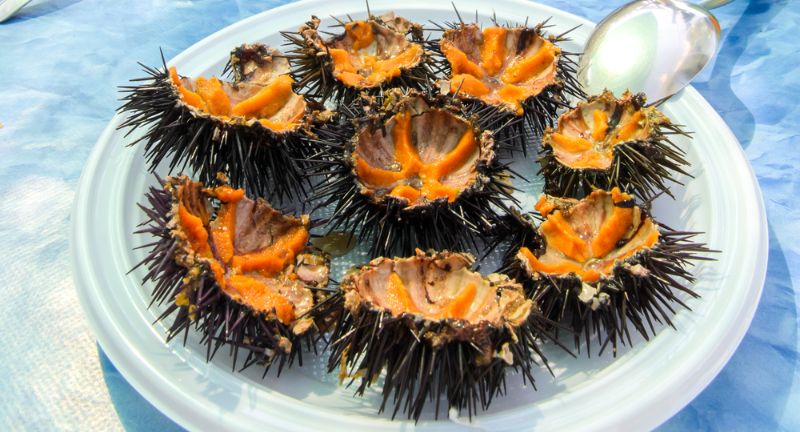
Shutterstock
Sea urchin, or uni, is a delicacy in many cultures, known for its rich, creamy texture and sweet, briny flavor. It’s a good source of protein, vitamins, and minerals, including zinc and vitamin B12. Sea urchin can be eaten raw, often as sushi or sashimi, and its unique taste can be a treat for adventurous eaters. Pairing sea urchin with simple ingredients like rice or toast can highlight its flavor, making it easier for newcomers to appreciate its culinary value.
Goat Cheese

Shutterstock
Goat cheese is prized for its creamy texture and tangy flavor, but it can be too strong for some palates. It’s rich in protein, calcium, and probiotics, making it a healthy addition to your diet. Goat cheese can be spread on crackers, added to salads, or used in cooking to add depth to dishes. Experimenting with different types of goat cheese, from mild to pungent, can help you find a variety that suits your taste while benefiting from its nutritional content.
Kefir

Shutterstock
Kefir is a fermented milk drink that originates from the Caucasus region, boasting a tart and slightly fizzy taste that can be a bit of a surprise to those new to fermented foods. It’s made by adding kefir grains—a symbiotic culture of yeasts and bacteria—to cow, goat, or sheep milk, resulting in a beverage that’s rich in probiotics, vitamins, and minerals, including B vitamins, calcium, and magnesium. These probiotics promote a healthy gut microbiome, enhancing digestion and boosting immunity. Kefir can be enjoyed on its own, blended into smoothies, or used as a base for salad dressings and sauces, offering a versatile way to incorporate its health benefits into your daily diet. Its unique taste and texture, along with its nutritional profile, make kefir a valuable addition to a balanced and health-conscious diet.
Bitter Melon

Shutterstock
Bitter melon, also known as bitter gourd, is a unique vegetable-fruit that stands out for its distinctively sharp, bitter flavor, which can be an acquired taste for many. Native to tropical and subtropical regions of the world, it is not only a staple in Asian, African, and Caribbean cuisines but also recognized for its medicinal properties. Rich in vitamins A and C, iron, potassium, and antioxidants, bitter melon is particularly noted for its ability to help regulate blood sugar levels, making it a valuable food for managing diabetes. Incorporating bitter melon into your diet can be done through various methods, such as stir-frying, boiling, or even juicing, which can help mitigate its bitterness while allowing you to benefit from its diverse nutritional profile and health benefits.
Dandelion greens

Shutterstock
Dandelion greens, often considered mere yard weeds, are in fact a nutritious leafy green with a slightly bitter, earthy flavor. These greens are packed with vitamins A, C, and K, and are rich in calcium, iron, and potassium, contributing to bone health, blood clotting, and antioxidant properties. They have been used in traditional medicine for their diuretic effect and ability to support liver health. Dandelion greens can be enjoyed in a variety of ways, from raw in salads to sautéed or blanched to reduce their bitterness. Incorporating dandelion greens into your diet not only diversifies your vegetable intake but also utilizes a sustainable and readily available food source, turning what’s often seen as a nuisance in lawns into a valuable, health-promoting ingredient.
Swiss Chard

Shutterstock
Swiss chard is a leafy green vegetable that boasts vibrant leaves and stalks in a variety of colors, from deep greens to bright reds, oranges, and yellows. It’s celebrated not only for its ornamental beauty but also for its nutritional value, being rich in vitamins A, C, and K, as well as minerals like magnesium, potassium, and iron. This nutritional powerhouse supports bone health, boosts the immune system, and helps manage blood sugar levels. Swiss chard can be prepared in numerous ways—sautéed, added to soups, or mixed into salads. Its slightly bitter taste mellows when cooked, making it a versatile and beneficial addition to a healthy diet. Integrating Swiss chard into meals not only adds a splash of color but also a host of essential nutrients, enhancing both the visual appeal and nutritional balance of your dishes.
Black Garlic

Shutterstock
Black garlic is a unique ingredient that results from the fermentation of regular garlic under controlled heat and humidity, a process that not only changes its color to a deep black but also its flavor and texture. The once pungent and spicy cloves become sweet, soft, and chewy, with complex flavors reminiscent of balsamic vinegar and tamarind. This transformation also enhances its antioxidant properties, making black garlic higher in certain antioxidants compared to raw garlic, and it’s believed to offer additional health benefits, including improved heart health and reduced inflammation. Black garlic can be used in a variety of culinary applications, from being spread on bread as a paste, incorporated into sauces and dressings, or simply eaten as a snack, offering a unique way to enjoy the health benefits of garlic without the strong odor and sharp taste associated with its raw form.
Conclusion

Shutterstock
As we conclude our exploration of these distinctive yet nutritious foods, it’s clear that broadening our dietary horizons can be both a challenge and a delight. While some items may initially seem daunting due to their unfamiliar tastes or textures, embracing these unique foods can enrich our palates, improve our nutritional intake, and even lead to new culinary favorites. By approaching these foods with an open mind and a willingness to experiment with different preparation methods, we can discover the joy of diversifying our diets. Ultimately, integrating such varied and healthful options into our meals not only contributes to our physical well-being but also adds excitement and variety to our culinary adventures.
More From Health + Wellness
-


Menopausal Hot Flashes Getting You Down? Avoid These Three Treats
-


Foods That Can Help Unclog Your Arteries
-


Krispy Kreme Giving Free Donuts to Blood Donors
-


Healthy Snacks To Help You Cut Cravings And Lose Weight
-


Researchers Find Height Can Affect Colon Cancer Risk
-


A Common Ingredient Could Reduce Life Expectancy
